#Unmanned Aircraft Systems (UAS)
Explore tagged Tumblr posts
Text
Thermal Imaging Market to be Worth $7.8 Billion by 2032
Meticulous Research®—a leading global market research company, published a research report titled, ‘Thermal Imaging Market by Type (Handheld Cameras, Fixed Cameras, Scopes, Modules), Technology (Cooled, Uncooled), Wavelength (SWIR, MWIR, LWIR), Application (Security & Surveillance) - Global Forecast to 2032’
According to the latest publication from Meticulous Research®, the thermal imaging market is expected to reach $7.8 billion by 2032, at a CAGR of 7.2% from 2025 to 2032. This market’s growth is attributed to several factors, such as the growing need for surveillance & security solutions and the increasing utilization of thermal imaging in manufacturing and industrial settings. Additionally, the surge in demand for thermal imaging in healthcare, growing military & defense expenditure in advanced surveillance technologies, and rising unmanned aerial vehicles (UAVs) are expected to create market growth opportunities. However, the availability of alternative imaging technologies, such as visible light cameras & radar systems, may restrain the growth of this market.
On the other hand, the high cost of thermal imaging devices is a major challenge for the players operating in this market.
The global thermal imaging market is segmented by type, technology, wavelength, and application. This study also evaluates end-user industry competitors and analyzes the market at the region/country level.
Download Sample Report Here @ https://www.meticulousresearch.com/download-sample-report/cp_id=5978
Based on type, the thermal imaging market is broadly segmented into handheld/portable cameras, fixed/mounted cameras, scopes & eyewear, and modules. In 2025, the portable or handheld cameras segment is expected to account for the largest share, over 55.0%. This segment's large market share is attributed to its features, such as ease of use and portability, and the growing use of portable or handheld cameras for field inspection & maintenance and emergency and rescue operations.
However, the fixed/mounted cameras segment is expected to register the highest CAGR during the forecast period. This segment’s growth is driven by its ability to provide continuous, high-precision, real-time monitoring of critical infrastructure without the need for manual intervention, to withstand harsh environmental conditions, and its increasing demand for fixed thermal cameras for integrating with automated security and monitoring systems.
Based on technology, the thermal imaging market is segmented into cooled thermal imaging and uncooled thermal imaging. In 2025, the cooled thermal imaging segment is expected to account for a larger share of over 64.0% of the thermal imaging market. This segment’s large market share is due to its sensitivity, high accuracy, long-range detection, and image resolution, which allows for the detection of minute temperature differences and the capture of detailed thermal images and increasing use of cooled thermal imaging for extreme environmental conditions, such as high-temperature industrial environments or cold regions.
However, the uncooled thermal imaging segment is expected to register the highest CAGR during the forecast period. This segment’s growth is driven by its features, including cost-effectiveness, ease of maintenance, reduced operational costs, and growing demand for uncooled thermal imaging products in applications such as building diagnostics, wildlife monitoring, emergency response, law enforcement, and temporary monitoring needs in various scenarios.
Based on wavelength, the thermal imaging market is segmented into shortwave infrared (SWIR), mid-wave infrared (MWIR), and longwave infrared (LWIR). In 2025, the LWIR segment is expected to account for the largest share of over 49.0% of the thermal imaging market. The growing use of LWIR cameras in environmental monitoring, advanced driver assistance systems (ADAS), security and surveillance, and the need to detect thermal radiation emitted by objects across various industries are the main causes of this segment's large market share. Other factors include the segment's ability to provide non-contact temperature measurement for monitoring high-temperature processes and equipment, and its cost-effectiveness in comparison to MWIR and SWIR systems.
However, the SWIR segment is expected to register the highest CAGR during the forecast period. This growth is driven by its superior image contrast and detail, enhanced capability to ensure clear visibility in challenging environmental conditions, including smoke, fog, and haze, and growing demand for SWIR technology in medical diagnostics for non-invasive imaging.
Based on application, the thermal imaging market is segmented into aerospace & defense, security & surveillance, building & construction, personal vision systems, healthcare & medical diagnostics, energy & utilities, agriculture, research & development, search & rescue operations, marine systems, and other applications. In 2025, the security & surveillance segment is expected to account for the largest share of over 41.0% of the thermal imaging market. The growing need for improved surveillance capabilities, such as visibility in low light and obscured conditions, the growing use of thermal imaging to improve perimeter security for securing sensitive facilities and high-profile events, and the growing integration of thermal cameras into smart security systems to the overall effectiveness of security measures are all factors contributing to this segment's large market share.
However, the healthcare & medical diagnostics segment is expected to register the highest CAGR during the forecast period. This growth is being driven by an increase in demand for thermal imaging technology owing to its non-invasive nature for early disease detection by identifying abnormal heat patterns associated with conditions such as breast cancer, vascular disorders, and inflammation, and an increase in the use of thermal imaging for fever screening in public areas and in veterinary medicine to diagnose and monitor health conditions in animals.
Based on geography, the thermal imaging market is segmented into North America, Europe, Asia-Pacific, Latin America, and the Middle East & Africa. In 2025, North America is expected to account for the largest share of over 36.0% of the thermal imaging market.
North America's significant market share can be attributed to several key factors, including rising concerns over terrorism, crime, and public safety, increasing deployment of thermal imaging in large-scale surveillance applications such as city-wide monitoring or border control, increasing technological advancements in thermal imaging, high investments in advanced technologies for military and defense applications, and growing focus on advancing medical tools for non-invasive diagnostics and early disease detection.
Moreover, Asia-Pacific is expected to register the highest CAGR of over 8.5% during the forecast period.
Key Players:
The key players operating in the thermal imaging market are Teledyne FLIR LLC (U.S.) (a subsidiary of Teledyne Technologies Incorporated (U.S.)), Fluke Corporation (U.S.), L3Harris Technologies, Inc. (U.S.), Leonardo S.p.A. (Italy), Axis Communications AB (Sweden), BAE Systems plc (U.K.), RTX Corporation (U.S.), Lockheed Martin Corporation (U.S.), Testo SE & Co. KGaA (Germany), Thales Group (France), Seek Thermal, Inc. (U.S.), Exosens (France), Honeywell International Inc. (U.S.), Trijicon, Inc. (U.S.), Cantronic Systems, Inc. (U.S.), Safran Group (France), Zhejiang Dali Technology Co., Ltd. (China), HT Italia S.r.l. (Italy), Thermoteknix Systems Ltd. (U.K.), and Bullard (U.S.).
Complete Report Here : https://www.meticulousresearch.com/product/thermal-imaging-market-5978
Key questions answered in the report-
Which are the high-growth market segments based on type, technology, wavelength, application, and geography?
What was the historical market for the thermal imaging market?
What are the market forecasts and estimates for the period 2025–2032?
What are the major drivers, restraints, opportunities, and challenges in the thermal imaging market?
Who are the major players, and what shares do they hold in the thermal imaging market?
What is the competitive landscape in the thermal imaging market?
What are the recent developments in the thermal imaging market?
What do the major players adopt the different strategies in the thermal imaging market?
What are the key geographic trends, and which are the high-growth countries?
Who are the local emerging players in the global thermal imaging market, and how do they compete with the other players?
Contact Us: Meticulous Research® Email- [email protected] Contact Sales- +1-646-781-8004 Connect with us on LinkedIn- https://www.linkedin.com/company/meticulous-research
#Thermal Imaging Market#Thermal Image#Night Vision#Thermogram#Security & Surveillance#Monitoring & Inspection#Fire Fighting#Personal Vision Systems#Vehicle Targeting#Counter-Unmanned Aircraft Systems (C-UAS)#Maritime & Coastal Surveillance#Search & Rescue Operation#Space Exploration Thermal Mapping#Handheld/Portable Cameras#Fixed/Mounted Cameras#Thermal Scopes#Military Targeting Systems#Perimeter Surveillance
0 notes
Text
Dronebuster: Countering the Growing Threat of Unmanned Aerial Vehicles
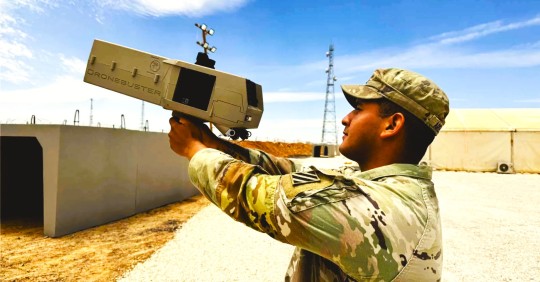
The recent Eager Lion 2024 military exercise in Jordan served as a crucial platform for the U.S. Army to showcase its advanced Dronebuster technology. This innovative system highlights the growing importance of counter-drone measures as unmanned aerial vehicles (UAVs), commonly known as drones, continue to surge globally.
#Dronebuster#Counter-drone#Unmanned Aerial Vehicle (UAV)#C-UAS (Counter-Unmanned Aircraft System)#Eager Lion Military Exercise#BLOS Vs LOS#Reconnaissance drone#U.S. Army#U.S. Department of Defense#NATO#drone#drones uav#military technology#military#military aircraft
0 notes
Text

U.S. F-16 Fighters Shot Down Drones with Laser-Guided Rockets in Combat
F-16 APKWS shoot drones
The U.S. Air Force has officially employed for the first time laser-guided 70mm rockets in the air-to-air role during operations in the Red Sea over the course of 2024. The Advanced Precision Kill Weapon System II (APKWS II) guided-rockets were deployed from F-16 Viper multirole fighter jets to engage hostile drones launched by the Houthis, the Iranian-backed Yemeni militia.
The U.S. Air Force confirmed that F-16 fightes used Advanced Precision Kill Weapon System 70mm guided rockets in the air-to-air role in combat to shoot down Houthi drones.The APKWS IIU.S. Operations in the Red Sea against the Houthis
The U.S. Air Force has first announced back in 2019 that the APKWS II, originally developed as a low-cost air-to-ground precision munition, had been tested successfully in the air-to-air role, but until now no operational use of the weapon in this role has been disclosed. The details of the combat debut of the APKWS II in this new role are still scarce, with no knowledge of how many guided rockets were employed, how many Houthi drones have been shot down with the weapon, and the exact timeline of the engagements.
A U.S. official told to The War Zone few days ago that the APWKS II air-to-air capability was first employed last year “as one of many options for countering the Houthi UAS threat.” The official added that “It is a lower-cost option compared to the AIM-9X. That lower cost is one of the benefits of using it.”
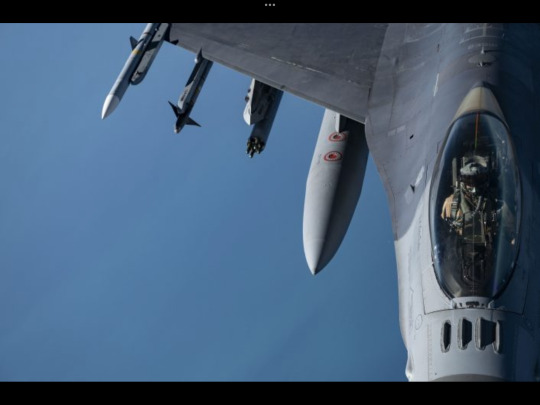
A U.S. Air Force F-16 Fighting Falcon is refueled over the U.S. Central Command area of responsibility Dec. 17, 2024. [Author’s note: : the aircraft is armed with a 7-round rocket launcher.] (U.S. Air Force photo)
The APKWS II
The AGR-20 Advanced Precision Kill Weapon System II (APKWS II) is a conversion of the Hydra 70 unguided rockets which adds a laser guidance kit to the baseline weapon, turning it into a precision-guided munition (PGM). The Hydra 70 is itself derived from a previous weapon, the 2.75-inch (70 mm) Mk 4/Mk 40 Folding-Fin Aerial Rocket (FFAR) of the late 1940s, a system widely employed in the Korean and Vietnam wars.
By adding a guidance section to a cheap rocket (inserted in the middle of the rocket, between the 10-pound high-explosive warhead at the front and the Mk66 Mod 4 rocket motor at the rear), the U.S. Air Force has therefore been able to obtain low-cost smart munitions that can be used in the air-to-ground role. These are particularly useful when the full warhead of larger bombs (like JDAM) and missiles (like the AGM-65 Maverick or AGM-114 Hellfire anti-tank missiles) is not needed to obtain the desired effects or not suitable due to the danger of collateral damages.
The guidance section of the APKWS includes four foldable wings with wing-mounted laser seeker collection optics with a wide field of view which enable to engage both moving and stationary targets. BAE Systems, which produces the weapon, says that “no modifications are required to the rocket, firing platform or fire control system,” with the only known modification being a longer variant of the LAU-131/A 7-round rocket launcher normally employed by the U.S. Air Force, called the LAU-131 A/A (the Navy uses the AGR-20 with the similar LAU-68 F/A).
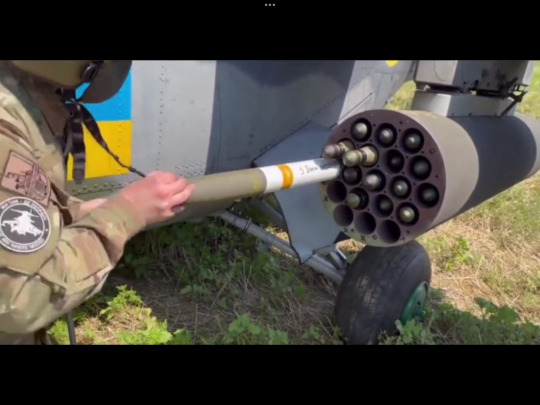
Ukrainian airman loading an American-made Hydra 70 unguided rocket into a rocket pod of a Czech-delivered Mil Mi-24V helicopter. (Image credit: Screenshot from X video)
The APKWS is also being used in a novel surface-to-air mode as a Counter-Unmanned Aircraft Systems (C-UAS) to engage low-flying, slow and cheap drones. Specifically, the weapon has been included in the Electronic Advanced Ground Launcher System (EAGLS) employed by the U.S. military in the Middle East and the U.S.-supplied VAMPIRE (Vehicle-Agnostic Modular Palletized ISR Rocket Equipment) used by Ukraine to counter Russian drones.
The U.S. Navy also announced in late 2023 that it was about to deliver a new proximity-fused warhead for APKWS II rockets, optimized for use against drones, albeit developed ostensibly for the surface-to-air role. However, further developing an air-to-air capability out of these older rockets is another impressive feat for the U.S. Air Force, that has now the possibility to engage targets at a very small fraction of the cost of other existing missiles.
While a current beyond visual range radar-guided AIM-120 Advanced Medium Range Air-to-Air Missile (AMRAAM) is priced at more than $1 million each and an AIM-9X Sidewinder Block II has a price tag of around $420,000, the guidance section of an APKWS II only costs around $15,000, with the full APKWS II round only costing a few thousand dollars more (to include the warhead and the motor).
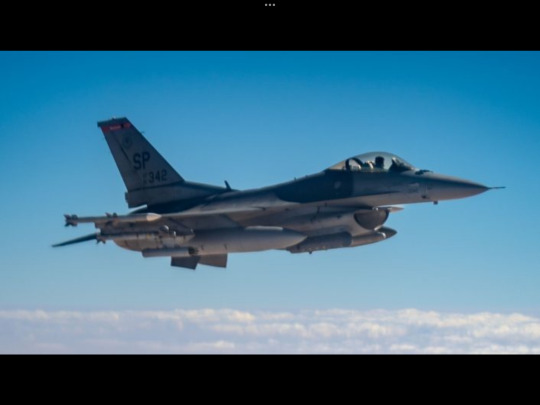
A U.S. Air Force F-16 Fighting Falcon flies a routine presence patrol mission over the U.S. Central Command area of responsibility, Jan. 25, 2025. [Author’s note: : the aircraft is armed with a 7-round rocket launcher.] (U.S. Air Force photo by Staff Sgt. Jackson Manske)
The low cost of the APKWS II comes with some restrictions, as the weapon is shorter ranged than the current USAF missiles, and the warhead is also smaller. However, against slow and cheap targets like drones, the AGR-20 can provide the Air Force with a highly cost-effective weapon.
Moreover, the APKWS II can provide American jets with deeper magazines for air-to-air munitions, as they can be carried in a 7-shot rocket pod on a single hardpoint that could otherwise take only a single AIM-9X or AIM-120 missile. The F-16 is also able to carry two LAU-131/As with the standard 70 mm unguided rockets on each pylon by using a triple ejector rack, although it is unclear if this capability is also available for the LAU-131A/A with the AGR-20.
This feature could come in hand while facing swarm or saturation attacks from enemy drones, a tactic that has already been used by Russia in their aggression of Ukraine, by Iran in their attacks on Israel and sometimes on a smaller scale even by the Houthis. The high cost of the interceptors against these cheap targets and the magazine size of the launching platforms have been two of the main concerns highlighted by forces countering these attacks.
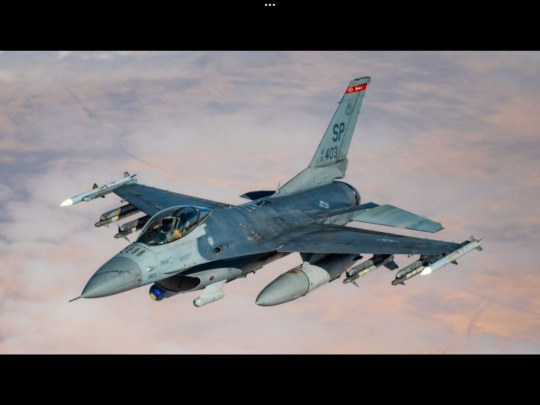
A U.S. Air Force F-16 Fighting Falcon flies a routine presence patrol mission over the U.S. Central Command area of responsibility, Jan. 25, 2025. [Author’s note: : the aircraft is loaded with a mix of AIM-120C, AIM-9M and AIM-9X missiles and accompanies the fighter armed with the APKWS] (U.S. Air Force photo by Staff Sgt. Jackson Manske)
U.S. Operations in the Red Sea against the Houthis
The U.S. military has been involved since late 2023 in operations with a multi-national coalition in the Red Sea, in the Gulf of Aden and in the area of the Bab el-Mandeb strait against the Iranian-backed Houthi militia operating out of Yemen. The Houthis started attacks on civilian shipping in the area after the terrorist attack of Hamas on Israel of Oct. 7, 2023.
To support Hamas, Houthis employed both aerial and naval drones, in addition to missile attacks, against shipping routes while also launching sporadic long-range drone and ballistic missile attacks on Israel. After the UN Security Council adopted Resolution 2722 in January 2024, condemning the Houthi attacks and reaffirming the freedom of navigation, the United States launched Operation Prosperity Guardian, aimed at protecting civilian shipping and reducing the Houthi threat, with the first airstrike against Houthis dating back to Jan. 12, 2024.
Over the course of one year, the warships and aircraft involved in Operation Prosperity Guardian have engaged multiple times Houthi targets, including land strikes to remove military capabilities from the terrorist group, and engagements to shoot down drones and missiles launched from Yemen.

The Carrier Air Wing 3, aboard the aircraft carrier USS Eisenhower (CVN-69), logged 14,000 sorties, 32,000 flight hours and 15,000 arrested landings during a lengthy deployment in the Red Sea, while its F/A-18E/F Super Hornets and E/A-18G Growlers shot more than 60 air-to-air missiles. Operation Prosperity Guardian also included the first long-range operational use of B-2 stealth bombers against Yemen, with the stealth bombers flying all the way from their home base at Whiteman Air Force Base in Missouri, and the combat debut of the F-35C carrier-based stealth fighter jets.
Interestingly, the U.S. Navy recently announced that an MH-60R Seahawk helicopter, an upgraded variant of the original UH-60 Black Hawk developed for naval use, has been involved in the shoot-down of a Houthi drone, but it is unclear what weapon was involved and when this happened. Probable candidates for the achievement are however restricted to only a few weapon system, including the AGM-114 Hellfire missile, the very AGR-20 Advanced Precision Kill Weapon System (APKWS) also used by U.S. Air Force’s F-16s, or on-board machine guns.
MH-60R shoots down drone

An MH-60R Sea Hawk prepares to land on the flight deck aboard the Arleigh Burke-class guided-missile destroyer USS Cole (DDG 67) in the U.S. Central Command area of responsibility. (Image credit: U.S. Navy Seaman Mark Pena)
@TheAviationist .com
14 notes
·
View notes
Photo

(via Intel Officials Warned Police That US Cities Aren’t Ready for Hostile Drones | WIRED)
Yeah, but are they hostile? Do we even know yet?
“The Department of Homeland Security issued warnings to state and local law enforcement agencies this summer regarding the “growing illicit use” of commercial drones, internal documents show. Among the recommended steps was to conduct “exercises to test and prepare response capabilities.
A DHS memo from August, which has not been previously reported, paints US cities as woefully underprepared for the “rising” threat of weaponized drones. The capabilities of unmanned aircraft systems (UAS) are “progressing faster” than available countermeasures offered under “federal prevention frameworks,” the memo says, adding that it’s common for state and local authorities to observe “nefarious” and “noncompliant” flights but still lack the authority to intervene.“
11 notes
·
View notes
Text
Donald Trump explodes over drone 'invasion' and sends Biden an ominous warning
Donald Trump has demanded the drones flying over multiple US states be shot down by the Biden White House after days of mysterious sightings across the sky.
Numerous 'SUV-sized' craft first appeared in New Jersey in mid-November, and have since spread to New York, Pennsylvania and Connecticut.
The first sightings were over the US Army's Picatinny Arsenal and President-elect Donald Trump's golf course in Bedminster, which raised concerns the drones are part of spy campaign.
Trump didn't directly address the sightings over his club but demanded action from Joe Biden and the government in a Truth Social post Friday.
He wrote: 'Mystery Drone sightings all over the Country. Can this really be happening without our government’s knowledge. I don’t think so! Let the public know, and now. Otherwise, shoot them down!!! DJT.'
Trump joined bipartisan calls to figure out the source of the flying objects as Phil Murphy, the Democrat governor of New Jersey, wrote directly to Biden Friday.
'I wrote to @POTUS to express my concerns about reports of unmanned aircraft systems in and around NJ airspace,' Murphy said.
'Since existing laws limit the ability of state and local law enforcement to counter UAS, more federal resources are needed to understand what is behind this activity.'

9 notes
·
View notes
Text




Through the Years → Felipe VI of Spain (3,252/∞) 10 June 2024 | King Felipe VI during the Army's exercise 'Atlas' 24, at the National Training Center of San Gregorio, in Zaragoza, Aragon, Spain. The exercise is led by the Army's Artillery Group II/71 and consists of recreating an artillery scenario against drones, involving Anti-Aircraft Artillery detection systems and specific systems against Unmanned Aerial Systems (UAS), unmanned aircraft systems. (Photo By Ramon Comet/Europa Press via Getty Images)
2 notes
·
View notes
Text
Handle India's Drone Regulations: UAS, Digital Sky, and Remote Licence
Diligence Certification assists you in registering on the Digital Sky Platform and obtaining your Remote Pilot Licence, covering everything from comprehending Unmanned Aircraft Systems to implementing Drone Rules 2021. Ideal for drone enthusiasts and experts in India.
Learn more:https://diligencecert.blogspot.com/2025/05/drone-rules-2021-demystified-fly.html
0 notes
Text
Explore Trusted B2B Drone Deals Worldwide | Beyond Sky
🚀 Welcome to Beyond Sky — Your Gateway to the Global Drone Marketplace
Beyond Sky is a B2B platform approved by La French Tech, designed to connect global players in the drone industry. Whether you want to buy drones or explore cutting-edge solutions like camera UAVs, FPV drones, and LiDAR systems, Beyond Sky helps you access trusted drone deals worldwide in just a few clicks.
🤝 Why Choose Beyond Sky for Drone Buyers?
🔗 Buy Drone Easily from Verified Suppliers Looking to buy drone solutions? We connect you with verified sellers offering everything from drone electric motors to flight controllers for drones — all in one place.
⏰ Save Time & Effort Skip the endless searches. Beyond Sky helps you discover unmanned aircraft systems (UAS) and drone components — like drone propellers, batteries for a drone, and engines 2 stroke — with ease.
🌟 Trusted & Verified Network We feature only top-rated drone companies and drone manufacturers, ensuring every deal meets global industry standards.
🌾 Agricultural UAVs & Advanced Tech
📈 Drones for Agriculture & Agricultural UAV Transform your farming operations with drones for agriculture. From agricultural UAVs with multispectral sensors to UAV drone agriculture spraying systems, we help you connect with the best solutions.
📷 Camera UAV & IR Camera Monitor crops or inspect critical infrastructure using camera UAVs and IR cameras (infrared cameras), available through our network of top suppliers.
✈ Cutting-Edge Drone Components & Systems
⚙ Drone Electric Motors & Flight Controllers Access high-performance drone electric motors, flight controllers for drones, and electro-optical systems that improve flight efficiency and accuracy.
🔋 Batteries & Propellers Find lightweight batteries for a drone and durable drone propellers to maximize performance.
🌐 LiDAR & Advanced Sensors Explore drones equipped with LiDAR systems for precise mapping and surveying.
📡 Ground Systems & Drone Management
🕹 FPV Drone & Ground Control Stations Whether you need an FPV drone for immersive flight or ground control stations for professional UAV management, Beyond Sky connects you with the best.
🚁 Drone Docking Stations Automate your drone operations with advanced drone docking stations for charging, data transfer, and fleet management.
📲 Let’s Connect!
👉 Visit us: beyondsky.xyz 👉 Email us: [email protected] 👉 YouTube: Beyond SKY 👉 Facebook: Beyond SKY Facebook 👉 Twitter: Beyond SKY Twitter 👉 LinkedIn: Beyond SKY LinkedIn
🚀 Join Beyond Sky today and unlock a world of trusted B2B drone, UAV, and unmanned aircraft system deals with the latest technology!
#Dronesforagriculture#Dronemanufacturers#Unmannedaircraftsystems#FlightControllerfordrones#Batteriesforadrone#Dronedockingstations
0 notes
Text
North America Unmanned Traffic Management Market Opportunities, Statistics, Size, Share, Competitive Landscape with Forecast (2022-2030)
The North America unmanned traffic management market is expected to grow from US$ 352.83 million in 2022 to US$ 1,251.70 million by 2030. It is estimated to grow at a CAGR of 17.1% from 2022 to 2030.
North America Unmanned Traffic Management Market Introduction
A critical element for most businesses is supply chain management (SCM), which can directly or indirectly impact their operational capabilities. The increasing trend of Industry 4.0 adoption and the growing integration of Internet of Things (IoT)-enabled devices across all business domains are fostering greater technological integration within SCM. While technology adoption may present certain difficulties, the resulting advantages, including improved efficiency, reduced operational expenditure, and enhanced data protection, typically outweigh these challenges. Within this context of increasing technological integration, Unmanned Aerial Vehicles (UAVs) and Unmanned Aircraft Systems (UAS) are increasingly gaining importance in the transportation and logistics sector due to the benefits they provide. Drones are being utilized at various stages throughout a supply chain, such as inventory management, the tracking of 'lost' items, the transfer of goods between storage locations, and final-mile delivery. Emerging drone applications include truck-drone collaborations, referred to as multi-UAV parallel delivery, where drones carry out deliveries to multiple destinations directly from the delivery vehicle. The development of cargo UAVs, with the capacity to transport significant loads over considerable distances, further encourages the use of drones in this sector. With the growing number of trials involving drone-based delivery in the logistics and transportation industry, ensuring the secure movement of drones within available airspace is consequently becoming more significant.
Download our Sample PDF Report
@ https://www.businessmarketinsights.com/sample/BMIRE00027962
North America Unmanned Traffic Management Strategic Insights
Strategic insights concerning the North America Unmanned Traffic Management sector provide data-centric analysis of the industry's landscape, including prevailing trends, significant players, and regional variations. These insights offer actionable recommendations, enabling readers to distinguish themselves from competitors by identifying unexploited market segments or creating unique value propositions. By utilizing data analytics, these insights assist industry participants, whether they are investors, manufacturers, or other stakeholders, in anticipating market shifts. A forward-looking viewpoint is crucial, aiding stakeholders in predicting market changes and positioning themselves for sustained success in this evolving region. Ultimately, effective strategic insights empower readers to make well-informed decisions that drive profitability and achieve their business objectives within the market.
North America Unmanned Traffic Management Market Segmentation
North America Unmanned Traffic Management Market: By Type
Persistent UTM
Non-Persistent UTM
North America Unmanned Traffic Management Market: By Component
Hardware
Software
North America Unmanned Traffic Management Market: By Application
Communications
Navigation
Surveillance & Monitoring
North America Unmanned Traffic Management Market: By End Use
Agriculture & Forestry
Logistics & Transportation
Surveillance
North America Unmanned Traffic Management Market: Regions and Countries Covered
North America
US
Canada
Mexico
North America Unmanned Traffic Management Market: Market leaders and key company profiles
Airbus SE
AirMap Inc
Altitude Angel Ltd
Collins Aerospace
Frequentis AG
Leonardo SpA
Lockheed Martin Corp
OneSky Systems Inc
Thales SA
Unifly NV
About Us:
Business Market Insights is a market research platform that provides subscription service for industry and company reports. Our research team has extensive professional expertise in domains such as Electronics & Semiconductor; Aerospace & Defense; Automotive & Transportation; Energy & Power; Healthcare; Manufacturing & Construction; Food & Beverages; Chemicals & Materials; and Technology, Media, & Telecommunications
#North America Unmanned Traffic Management Market#North America Unmanned Traffic Management Market Opportunities#North America Unmanned Traffic Management Market Statistics
0 notes
Text
#Military Unmanned Aircraft Systems Market Analysis#Military Unmanned Aircraft Systems Market Scope#Military Unmanned Aircraft Systems Market Size
0 notes
Text
NQDefense Counter-Unmanned Aerial Systems: Total UAV Security
The rise of drone technology demands robust security measures, and NQDefense Counter-Unmanned Aerial Systems deliver comprehensive solutions. Our C-UAS technology employs radar, RF disruption, and AI-enhanced tracking to counter UAV threats. Whether for defense, law enforcement, or commercial security, NQDefense Counter-Unmanned Aerial Systems provide unmatched drone mitigation capabilities. Prevent unauthorized surveillance, smuggling, and aerial attacks with cutting-edge C-UAS technology. Trust NQDefense to safeguard your airspace with precision and efficiency.
Know more: https://www.nqdefense.com/understanding-the-need-for-counter-unmanned-aircraft-systems/
#NQDefense #CounterUnmannedAerialSystems
0 notes
Text
US Army Tests Long-Endurance Drones and Balloons in the Philippines: Pushing Boundaries in Multi-Domain Operations
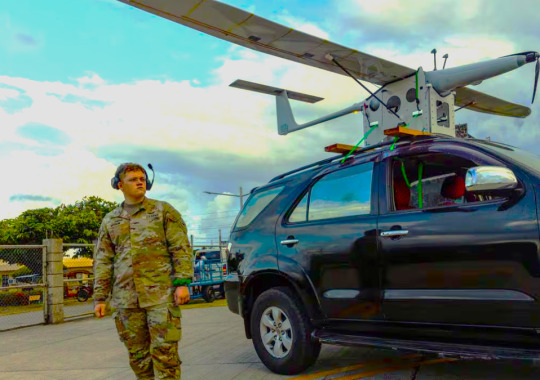
The US Army is actively exploring the potential of long-endurance drones and high-altitude balloons in the Indo-Pacific region. During the recent Balikatan military exercise in the Philippines (April 11-May 9, 2024), the 1st Multi-Domain Task Force (MDTF) utilized these innovative technologies to gather valuable data and experiment with their tactical applications.
#Long-endurance drones#Balikatan military exercise#Indo-Pacific region#Unmanned Aircraft Systems (UAS)#K1000 drone#High-altitude balloons#US Army drones Philippines#Multi-Domain Task Force (MDTF)#ERSE#drone#drones uav#military#military aircraft#military technology
0 notes
Text

Enclosures To Defend F-15Es From Drone Attacks Eyed At Seymour Johnson AFB
Joseph TrevithickPUBLISHED May 30, 2024 5:02 PM EDT
Officials at Seymour Johnson Air Force Base in North Carolina are looking into the possibility of erecting physical barriers to protect F-15E Strike Eagles there from drones.
USAF
Officials at Seymour Johnson Air Force Base in North Carolina are looking into the possibility of setting up physical barriers to help protect F-15E Strike Eagles there from being attacked by small drones. The anti-drone barricade idea underscores the danger that drones present right now to U.S. military facilities and critical civil infrastructure domestically, as well as to American forces overseas. It also speaks to how the U.S. military is still lagging in efforts to address these still-growing threats at home and abroad, as well as continued legal, regulatory, and other challenges.
The U.S. Air Force's 4th Contracting Squadron, part of the 4th Fighter Wing at Seymour Johnson, put out its request for information (RFI) about potential options for "Counter Small Unmanned Aerial System Barrier" yesterday. The facility in North Carolina is one of two bases in the United States that host operational F-15E Strike Eagle squadrons. F-15Es are some of the Air Force's most in-demand tactical combat jets. In April, forward-deployed Strike Eagles, including from Seymour Johnson's 335th Fighter Squadron, played out an outsized role in defending Israel from incoming Iranian threats by downing more than 70 drones.

F-15Es on the flight line at Seymour Johnson Air Force Base in 2022. USAF
"Problem Statement: Small Unmanned Aerial Systems (s-UAS) disrupt airfield operations and agencies have limited response capabilities due to restrictions on counter measures posed by the Federal Aviation Administration (Section 130i, Title 10, USC)," the notice says. We will come back to that latter point.
"The requirement: Build a passive barrier that will prevent a Group 1 or Group 2 sUAS from making physical contact with an F-15E Strike Eagle using commercial off the shelf material," it adds.
The U.S. military breaks uncrewed aircraft systems (UAS) down into five groups based on maximum weight, operating altitude, and top speed. Group 1 includes drones with weights up to 20 pounds, that can fly up to 1,200 feet, and can reach speeds of up to 100 knots. Group 2 is the next tier up covering uncrewed aerial vehicles that weigh between 21 and 55 pounds, can get up to 3,500 feet, and hit top speeds of up to 250 knots.
The requirements for the proposed anti-drone barriers at Seymour Johnson include that it "needs the strength to stop [a] 55lb drone traveling at 125 mph [nearly 109 knots]" and that "any space/gaps in material or design should not exceed six inches."
How exactly the barriers might be emplaced is not entirely clear, but mention is made of existing flight line shelters with simple canvas covers, suggesting that this would be add-on protection for those structures.

A look at the kind of open canvas-topped shelters in use on the flight line at Seymour Johnson now (seen here after a snowstorm in 2022). USAF
The "weight of material should be kept to a minimum to reduce structural load and facilitate rapid open/closing," the RFI does note, adding that whatever the barriers are made of needs to be flame retardant. The "system [also] needs to be tightly secured in both open and closed positions."
Whether or not any specific drone incidents at Seymour Johnson have prompted this barrier requirement is unknown and The War Zone has reached out for more information.
What is known is that drone incursions over or near U.S. military bases and training ranges, as well as critical civilian infrastructure, across the United States (including its outlying territories) have been an increasingly serious issue for years now, as The War Zone regularly reports. Just in March, we were the first to reveal that Langley Air Force Base in Virginia had been swarmed by drones for weeks last year. Those incidents prompted a major whole-of-government response, which you can read more about here.
Though many such drone-related incidents to date have appeared to be innocuous, they reflect very real potential threats that are only expected to grow in size and scope going forward. The barrier to entry to employing small drones, as well as weaponizing them to differing degrees, is also very low. The conflict in Ukraine has forced this reality fully into the mainstream consciousness, especially through the use on both sides of highly maneuverable first-person view (FPV) kamikaze drones. These are exactly the kinds of threats officials at Seymour Johnson now look to be seeking to address in part through physical barriers – which is also one of the many anti-drone countermeasures that have already emerged in Ukraine.

At the same time, it is important to stress again that these threats are not new or unknown to the U.S. military, and they are rapidly growing in frequency and sophistication.

"One day last week I had two small UASs that were interfering with operations... At one base, the gate guard watched one fly over the top of the gate check, tracked it while it flew over the flight line for a little while, and then flew back out and left," now-retired Air Force Gen. James "Mike" Holmes, then head of Air Combat Command (ACC), said back in 2017.
“Imagine a world where somebody flies a couple hundred of those and flies one down the intake of my F-22s with just a small weapon on it," Holmes added at the time.
As we noted at the time, jets just sitting idle and exposed on the flight line would be even easier targets for drones. In this way, an adversary could potentially knock out large numbers of aircraft on the ground, even in the United States using commercially available technology, before they ever have a chance to get in the fight.
Four years later, AFWERX, an internal Air Force technology incubator, put out a broad call for proposals for ways to defend the service's bases at home and abroad from drones. As the new contracting notice from Seymour Johson Air Force Base shows, the U.S. military continues to be very much playing catch-up to addressing these now well-established threats.

Another look at an F-15E under an open shelter at Seymour Johnson Air Force Base. USAF
“You can only report what you see, and so that’s part of the challenge,” a senior U.S. defense official told reporters at the Pentagon just earlier this month when asked about drone threats to domestic facilities, according to Air & Space Forces Magazine. "But I’d say that’s usually two or three a week, total across the U.S. And it’s never primarily in one part of the country or another."
Part of the issue, at least domestically, continues to be the morass of overlapping authorities, as well as competing legal and regulatory requirements. Back in 2017, Gen. Holmes noted that "I have no authority given to me by the government to deal with that [drone incursions]."
Even in 2017, efforts were being made to try to expand the authorities available to base commanders in the United States to respond to potentially hostile drones. The U.S. government has made additional domestic counter-drone policy changes since then.
However, as the new contracting notice from Seymour Johnson Air Force Base makes clear, there continue to be hurdles to taking more proactive measures to address drone threats.
Section 130i, Title 10, as cited in the Seymour Johnson anti-drone barrier RFI, does provide authority for "action" to be taken to include measures to "disrupt control of the unmanned aircraft system or unmanned aircraft, without prior consent, including by disabling the unmanned aircraft system or unmanned aircraft by intercepting, interfering, or causing interference with wire, oral, electronic, or radio communications used to control the unmanned aircraft system or unmanned aircraft" and the "use reasonable force to disable, damage, or destroy the unmanned aircraft system or unmanned aircraft."

Air Force security personnel train with 'guns' designed to jam the link between a drone and its controller at Joint Base McGuire-Dix-Lakehurst in New Jersey. USAF
However, the statute also stipulates that "the Secretary of Defense shall coordinate with the Secretary of Transportation and the Administrator of the Federal Aviation Administration before issuing any guidance or otherwise implementing this section if such guidance or implementation might affect aviation safety, civilian aviation and aerospace operations, aircraft airworthiness, or the use of airspace."
The FAA continues to impose significant limitations on the use of active anti-drone countermeasures in many domestic contexts. The War Zone has also highlighted in the past how obtuse and convoluted the existing mechanisms are for securing authorization to take action against uncrewed aerial threats within the United States can be, and that situation does not look to have improved substantially in recent years.
"The first problem is that our nation lacks adequate drone detection capability. We still rely on the early warning radars that served us so well during the Cold War," Senators Jack Reed and Roger Wicker, wrote in a joint op-ed in the Washington Post in April. "Today, though, they are unable to detect, identify and track small aircraft at both high and low altitudes. Inside the United States, we can hardly track anything other than commercial aircraft. Almost none of our domestic military bases have the sensors to identify small drones."
It's worth noting here that the filter ‘gates’ on various air defense radars in North America were altered in February 2023, which immediately resulted in the tracking of a large amount of additional aerial activity. The radar changes followed a Chinese spy balloon intruding into U.S. airspace and soaring across the country over a period of days before being shot down over the Atlantic Ocean off the coast of South Carolina. Within a week, U.S. fighters had brought down three more still-unidentified objects flying in U.S. and Canadian airspace, as you can read more about here. Members of the Senate subsequently demanded a review of the U.S.-Canadian North American Aerospace Defense Command's (NORAD) “aerospace warning and control mission and procedures."

An unclassified map showing various NORAD air defense nodes in the contiguous United States, including certain early warning radar sites. DOD
"If we fixed our tracking problem, though, a second issue would arise. U.S. agencies lack clear lines of authority about which agency is responsible for stopping these incursions. Instead, a dizzying maze of overlapping jurisdictions and inflexible bureaucracies confuses, rather than clarifies, crisis response," Senators Reed and Wicker, a Democrat from Rhode Island and Republican from Mississippi, respectively, who are also the top members of the Senate Armed Services Committee, continued in their recent op-ed. "Government officials from an alphabet soup of agencies – Defense Department, Justice Department, Department of Homeland Security, Federal Aviation Administration – spend hours if not days simply discussing who can take action when a UAS is identified. Too often, low-altitude incursions are treated as a law enforcement matter instead of as a national security issue."
Whether Seymour Johnson ultimately gets anti-drone barriers or not remains to be seen. If these added defensive measures are implemented there, they could quickly become commonplace at other bases.
Regardless, the new contracting notice underscores the U.S. military's ongoing efforts to respond to the now well-established threat posed by uncrewed aerial systems, and its continued struggle in doing so.
Contact the author: [email protected]
@thewarzonewire via X
20 notes
·
View notes
Text
Autonomous Aircraft Market
The autonomous aircraft market is growing rapidly, driven by advancements in artificial intelligence, sensor technology, and increased demand for unmanned aerial systems (UAS). These aircraft operate with minimal or no human intervention, serving applications in defense, logistics, surveillance, and urban air mobility. Key drivers include cost reduction, enhanced safety, and efficiency improvements in aviation. North America and Europe lead due to strong R&D and regulatory support, while Asia-Pacific is emerging as a key market. Challenges include regulatory hurdles, cybersecurity risks, and technological limitations. Innovations in AI, 5G connectivity, and electric propulsion are shaping the future of autonomous aviation.
For More : https://tinyurl.com/mr35wknw

0 notes
Text
An S-80 Delivery Drone produced by the Samara Research and Production Centre based in Togliatti. Here’s what the Kremlin had to say:
Vladimir Putin visited the Samara Research and Production Center, which was created as part of the implementation of the national project "Unmanned Aviation Systems" and is the basis of the unmanned aviation cluster in the Samara region. The President toured the development, assembly and testing areas of unmanned aircraft systems (UAS). In particular, the Head of State was shown ready-made copter-type vertical take-off and landing aircraft that will be used in agriculture. Modification of the S-80 for agriculture in September 2024 became the first mass drone to receive the UAS type certificate. This allows you to use the drone for performing commercial work, for example, in logistics—for delivering up to 20 kg of goods. SPC of unmanned aircraft systems "Samara" is a public infrastructure platform for resident innovators, located in Togliatti. The founders of the NPC are the Transport of the Future company, which is also an anchor resident of the center, the government of the Samara Region, the NPI Platform, and the Zhigulevskaya Dolina Technopark.
0 notes